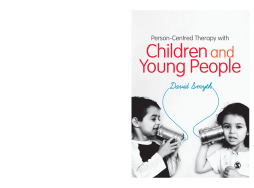
Additional Information
Book Details
Abstract
This engaging new book presents a 'child-centred' model of therapy that is thoroughly person-centred in its values. Establishing the roots of child-centred therapy in both child development theories and the Rogerian model, David Smyth demonstrates that counselling the person-centred way is exceptionally relevant to young people.
The book further develops child-centred therapy theory and practice, applying the model to real-life practice with children and young people, whether in play, school, organisations or with special needs groups. It also explores the complex professional issues so critical with this age group, including challenging boundaries, establishing an effective relationship with parents and other primary carers, legal and ethical considerations, and multi-professional practice.
The author's warm, accessible style conveys his passionate conviction that the person-centred approach can provide a strong foundation for child therapy practice. His book introduces humanistic counselling and psychotherapy trainees - as well as adult-trained therapists - to the particular requirements of working with children and young people, and also illustrates the value of using a 'child-centred' approach for those who might already be working with children in mental health settings. Equally, this volume can be used for professional development in many disciplines including adult trained therapists who want to extend their knowledge of people prior to reaching adulthood.
There is a delightful lack of jargon, to say the book is "user friendly" is inadequate, it is a delight to read. This excellent text is an invaluable tool for students and therapists of counselling and psychotherapy, as well as people involved in supporting the development of young people. It is therefore highly recommended.
Dr Margot Lindsay
'This accessible and engaging book presents a child-centred model of therapy, one that is firmly entrenched within the person-centred tradition yet it is simultaneously shaped by developmental theory. Overall, if you are wanting a book to provide a base from which to begin work with children or young people, this could well be it. This is an engaging and informative read that it is written in a manner that epitomises the approach from which it hails: warm, non-expert in tone, and congruent, and the personal nature of some of the content is a welcome change to other texts in this area'
Alison Smyth
BACP Children and Young People
